The Samsung RU8000 is the top model of Samsung’s 2019 non-QLED TV line. It is a middle range priced model. The Samsung NU8000 was replaced by the newer RU8000. Even though the NU8000 is last year’s model and was replaced by the RU8000, but you can still find the NU8000 in some stores. Just like other mid-range televisions on the market, they each come in a lot of screen size options. The smallest is the 49 inch model (the UN49RU8000 vs UN49NU8000), then there’s a 55 inch model (UN55RU8000 vs UN55NU8000), a 65 inch model (UN65RU8000 vs UN65NU8000), a 75 inch model (UN75RU8000 vs UN75NU8000), and the biggest is the 82 inch model (UN82RU8000 vs UN82NU8000).
Price is mostly dependent on the screen size. For the 55 inch model and smaller, the NU8000 is just a few dollars cheaper than the RU8000. This is partly due to the price of the NU8000 being lowered a lot. The 65 inch models and larger, the newer RU8000 can be hundreds of dollars cheaper than the NU8000. But of course, their prices are not fixed and can still change at any time. So what’s the difference between them and is the RU8000 as a newer model superior to the predecessor NU8000?
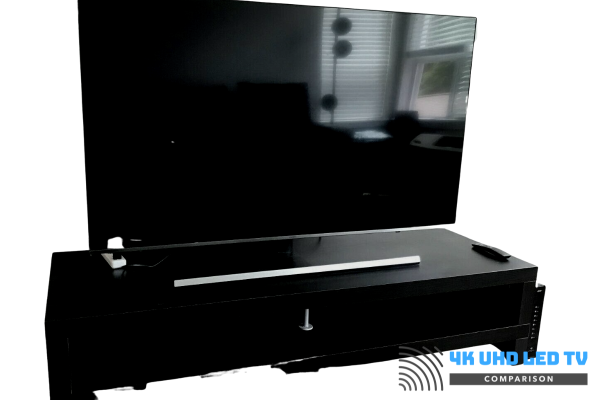
Samsung RU8000 vs NU8000 Specification
| Technology and Features | Samsung NU8000 | Samsung RU8000 |
|---|---|---|
| Screen Size Available | 49 Inches (UN49NU8000FXZA), 55 Inches (UN55NU8000 FXZA), 65 Inches (UN65NU8000 FXZA), 75 Inches (UN75NU8000 FXZA), and 82 Inches (UN82NU8000 FXZA) | 49 Inches (UN49RU8000 FXZA), 55 Inches (UN55RU8000 FXZA), 65 Inches (UN65RU8000 FXZA), 75 Inches (UN75RU8000 FXZA), and 82 Inches (UN82RU8000 FXZA) |
| Resolution | 4K (3840 x 2160) | 4K (3840 x 2160) |
| Panel Technology | VA Panel | VA Panel |
| Panel Form | Flat | Flat |
| Backlight Technology | Edge Lit LED | Edge Lit LED (Ultra Slim Array) |
| Local Dimming Technology | Yes | No |
| Dimming Technology | Supreme UHD Dimming | UHD Dimming |
| Ultra Viewing Angle Technology | No | No |
| Processor | UHD Engine | 4K UHD Processor |
| HDR Quality | HDR Plus | HDR |
| HDR Supports | HDR10, HLG, HDR10+ | HDR10, HLG, HDR10+ |
| Color Technology | Dynamic Crystal Color | Dynamic Crystal Color |
| Depth Enhancing Technology | Contrast Enhancer | N/a |
| UHD Up-Scaling | Yes | Yes |
| Motion Technology | Motion Rate 240 (49 Inches: Motion Rate120) | Motion Rate 240 (49 Inches: Motion Rate120) |
| Native Refresh Rate Panel | 120 Hz (49 inches Model : 60 Hz) | 120 Hz (49 inches Model : 60 Hz) |
| Smart TV Platform | Tizen 2018 | Tizen 2019 |
| Processor | Quad Core | Quad Core |
| Support Google Assistant | – | Yes |
| Support Amazon Alexa | – | Yes |
| Remote | Smart Remote (TM1850A) | Smart Remote (TM1950A) |
| Speaker Channel | 2.1 | 2 |
| Total Sound Output | 40 watts | 20 watts |
| HDMI Ports | 4 | 4 |
| HDMI Supports | HDMI 2.0 Full Bandwidth, CEC, HDCP 2.2 | HDMI 2.0 Full Bandwidth, CEC, HDCP 2.2 |
| USB 2.0 | 2 | 2 |
| USB 3.0 | No | No |
| Price | Check the price of the Samsung NU8000 |
Check the price for the Samsung RU8000 |
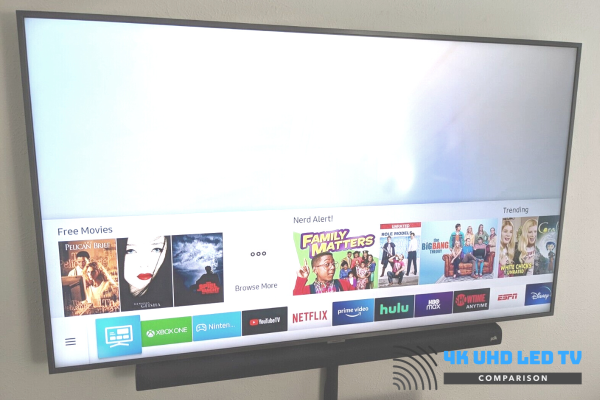
The Short Review of the Samsung NU8000 and the RU8000
As a newer model, the Samsung RU8000 still incorporates some technologies and features from its predecessor NU8000. Even though the RU8000 is the successor of the NU8000, in certain attributes it has a lower level or even lacks some features found on the NU8000. Here are the features and technologies of the Samsung NU8000 and RU8000. The text with red color highlights the differences between them.
Panel Technology
Nothing has changed on the panel technology used by the Samsung RU8000 from the NU8000. They both use VA (Vertical Alignment) panel technology. As is typical of VA panel, this makes for a good native contrast ratio to produce a deep black. On the other hand, the use of the VA panel makes for a poor side viewing angle. In 2019, Samsung introduced a new optical layer technology (called “Ultra Viewing Angle) that helps improve the side viewing angle coverage of its lineup. Currently this technology is just applied on the premium models like the Q90R and the Q80R.
Backlight Technology
The Samsung NU8000 and RU8000 use the same backlight technology, which is an edge-lit LED backlight. The difference is the NU8000 has local dimming technology that helps improve its dark room viewing technology. On the other hand, even though the RU8000 is the successor of the NU8000, the RU8000 lacks local dimming technology. Indicating a decline of the RU8000 over the predecessor NU8000.
The Samsung RU8000 actually has a technology called UHD Dimming, a feature that can help improve black level. But it is not a real local dimming technology like that found on the NU8000. This is just a software-based dimming system using an algorithm. The NU8000 actually has UHD Dimming features, which is called Supreme UHD Dimming. It works better than the UHD Dimming on the RU8000, albeit the difference is not too significant. One more feature of the NU8000 is that it can help to improve its contrast ratio with the “Contrast Enhancer”. The RU8000 lacks this feature.
Image Processor
In the comparison table above, the Samsung RU8000 and the NU8000 are powered by a different processor where the RU8000 is powered by a 4K UHD Processor while the NU8000 is powered by UHD Engine, but this is just a different name. I think there is no significant improvement with the 4K UHD Processor compared to the UHD Engine for the picture quality produced.
HDR Support
The Samsung RU8000 and the NU8000 support the same HDR formats. In addition to HDR10, the most popular HDR format, they both also support HLG (Hybrid Log Gamma), a HDR format developed by NHK and BBC for TV broadcasting. This allows you to watch TV shows with HDR quality. Additionally, they both also support HDR10+, an HDR format that is an improvement of the HDR10 format. The difference to HDR10 is that the HDR10 uses static metadata, whereas the HDR10+ uses dynamic metadata. Unfortunately, neither supports Dolby Vision (another HDR format that also uses dynamic metadata).
Motion Technology
For improving performance in handling motion, the Samsung NU8000 and the RU800 are supported by the same technology. They are both supported by Motion Rate 240 technology. They both have the same native refresh rate panel, which is 120 Hz. This allows them are able to play native 120 fps content or interpolate lower frame rate content at up to 120 Hz.
To dim their backlight, they both also use the PWM (Pulse Width Modulation) dimming system. Nevertheless, their dimming frequency is depending on the setting. When their picture mode is set to “Movies”, their dimming frequency is equal to 240 Hz. But even so, in all other modes, their dimming changes to 120 Hz. Additionally, when the Auto Motion Plus is set to “Custom” or “Auto”, their dimming frequency is always 120Hz, even if they are both set in Movie mode. The 120 Hz flicker can help fast motion look a little crisper, but on the other hand, this will also cause some unwanted duplication.
Additionally, they both also have an optional 60Hz (BFI) Black Frame Insertion mode. This feature can be activated by enabling “LED Clear Motion” in the “Auto Motion Plus” menu. This means, when the “LED Clear Motion” is enabled, the backlight flicker will change to 60 Hz. Enabling the BFI mode will help to make motion look crisper, particularly when they are playing 60 fps content — like sports or video games. On the other hand, their backlight flickers at lower frequency which could make the backlight flicker more noticeable for some people who are sensitive to flicker.
The best thing is that they both also already support FreeSync VRR (Variable Refresh Rate) technology. At 4K resolution, their refresh rate can change between 48 – 60 Hz while with 1080p and 1440p resolution, their refresh rate can change between 20 – 120 Hz. With compatible device like Xbox one or PC with compatible GPU, this allows you to play games with nearly tear-free.
Note: The 49 inch models (the UN49NU8000 and th UN49RU8000) are powered by Motion Rate 120 and only have a native 60 Hz refresh rate panel. Additionally, both do not support Variable Refresh Rate VRR technology.
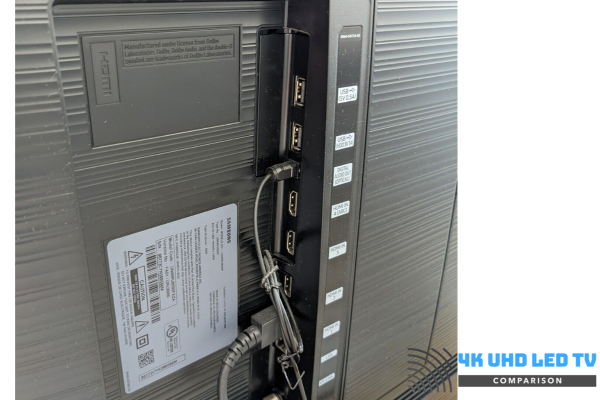
Connectivity
The Samsung RU8000 and the NU8000 are equipped with the same range of outputs and inputs. They both have 4 HDMI ports as their major connective point. Their HDMI ports support most common resolutions. The HDMI ports of the RU8000 support 1440p @ 60 Hz, while the NU8000 doesn’t support this higher resolution. Additionally, their HDMI ports also support HDMI 2.0 Full Bandwidth, HDCP 2.2, CEC, and ARC (HDMI 4). Unfortunately, neither supports HDMI 2.1, which makes their HDMI ports unable to accept HFR content such as 4K @ 120 Hz. Additionally, they both don’t support eARC (enhanced Audio Return Channel), so they cannot pass higher audio quality signals like DTS:X via DTS-HD MA or others. Furthermore their HDMI ports already support ALLM (Auto Low Latency Mode), allowing them to automatically change to low latency mode like Game Mode when a signal from a game console is detected.
In addition to HDMI, both have 2 USB ports that are USB 2.0 compatible. This means that they both don’t have USB 3.0. Furthermore, they both also have 1 Tuner IN (RF In), 1 Digital Audio Out (optical), and 1 Ethernet port. As to wireless connectivity, both are equipped with built-in Wi-Fi and Bluetooth.
Audio System
The newer Samsung RU8000 has a worse internal sounding speaker than the predecessor NU8000. The Samsung NU8000 comes with a 2.1 channel speaker setup with a total sound output of 40 watts. This means, it has two speakers where each speaker has 10 watts of sound output and 1 sub woofer with total audio power of 20 watts. On the other hand, the RU8000 is only equipped with a standard internal speaker system, which is 2.0 channel speaker system with 20 watts of total sound output. This means the NU8000 can deliver a more powerful sound output than the RU8000, particularly for low frequency bass. But even so, if you are not satisfied with sound output of RU8000, you can buy an additional external sound bar separately for improving its sound quality.
Smart TV Platform
As their smart TV platform, they both run the same OS which is Tizen OS, and is also called Smart Hub. However, the difference is that the RU8000 comes with a 2019 version while the NU8000 comes with the 2018 version. The 2019 version comes with some improvements from the 2018 version, particularly on the interface. The interface of the 2018 version is well organized and easy to use, but it has some bugs such as frequent animation lag and can be choppy at times, and there are dropped frames, and the interface freezes occasionally, and other minor issues. In the 2019 version, this has been minimized, so its interface looks much smoother than the 2018 version.
In term of apps provided, there are not many changes. Both have an excellent selection of preinstalled apps such as Netflix, YouTube, Amazon Videos, Web Browser, Games, Live TVs, and more. Their apps store is also the same, which is the Samsung apps store, where it provides a huge selection of apps you can download from your Samsung TV. Additionally, both of these versions also support voice navigation. Working with Samsung’s Bixby Voice Assistant, they both have excellent voice control allowing you to control most of the TV functions, you can even ask some basic questions. Meanwhile, a bit improvement brought by the 2019 version is that it has supports Google Assistant and Amazon Alexa, while the 2018 version has not support. But even so, the Amazon Alexa is not built-in on the RU8000. This means, to use it, you must buy Amazon Alexa Devices separately.
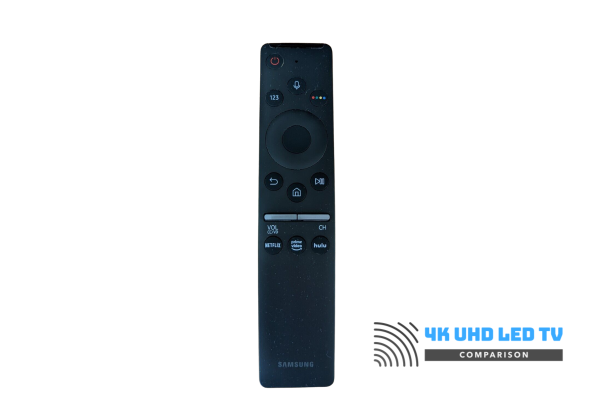
Remote Control
Just like their smart TV platform, as to their controller, the Samsung RU8000 comes with the 2019 model of Samsung’s smart controller (TM1950A), while the NU8000 comes with the 2018 model (TM1850A). Physically, they are almost similar in that they are small in size and only have few buttons. Functionally, they are also very similar. They both have a built-in microphone where you can give a voice command to control most of theTV functions. When you use voice navigation, these remotes don’t require a direct line-of-sight to the TV because they use a Bluetooth Connection. Additionally, they both also have the OneRemote feature, allowing them to act as a universal remote to control the other devices connected to your Samsung TV. Not only can HDMI CEC compatible devices be controlled by these remotes, but also devices which don’t support the HDMI CEC standard. To control a device that doesn’t support CEC, it does require direct line-of-sight to the device. The main difference between the remotes is that on the 2019 model, there are 3 additional dedicated buttons for Netflix, Amazon Prime, and Hulu, while the 2018 model doesn’t have these buttons.
>> Click here to check the price for the Samsung NU8000 <<
>> Click here to check the price for the Samsung RU8000 <<
The Samsung NU8000 vs the RU8000 Performance
Black Level and Contrast Ratio
The Samsung RU8000 and the NU8000 have a similar native contrast ratio. And as is typical of TVs with a VA panel, both the Samsung NU8000 and the RU8000 have an excellent native contrast ratio, better than most VA TVs. This allows them to produce a very deep black level, deeper than 0.02 nits. On the other hand, their black uniformity is also equally excellent. The combination of a deep black level and excellent black uniformity certainly make dark scenes displayed on their screen to look excellent, even when set in a dark room. Additionally, the black level produced by them is also deep enough to show shadow details of HDR images excellently showing details as they should be in HDR.
An advantage to the NU8000 is that it is has local dimming feature that can improve its dark room performance while the RU8000 doesn’t have that feature . The local dimming feature of the NU8000 may be not able to boost its contrast ratio, but at least it is able to reduce the amount of visible blooming. On the other hand, the RU8000 lacks local dimming technology. Without local dimming, when it is showing a small highlight in a dark scene, blooming will more visible on its screen rather than on the screen of the NU8000. This will be noticeable when showing a movie with subtitles where the subtitle will look more focused on the screen of the NU8000 than on the RU8000.
Winner: NU8000
SDR Peak Brightness
The SDR peak brightness of the Samsung RU8000 is not as bright as its predecessor the NU8000. With real content, the RU8000 is able to hit around 350 nits. The good thing is that peak brightness is relatively consistent at any window size, except 2% window (2% of the screen is white while the rest is black). Meanwhile, on a 2% window, its peak brightness is dimmed by the TV’s CE down to around 200 nits to prevent excessive blooming when it is showing small highlights. With this behavior, as long as it is not set in a very bright room, its peak brightness is bright enough to overcome glare. And combined with its good reflection handling, in most rooms the picture displayed onscreen looks fairly good without any distracting glare.
On the other hand, the peak brightness of the Samsung NU8000 is brighter than the RU8000. With real content, it is able to hit around 500 nits. Just like the RU8000, except 2% window, its peak brightness is also relatively consistent regardless the window sizes. But even so, when showing small highlights (2% window), the NU8000 has a different behavior to the RU8000. On the screen of the NU8000, a small highlight can be shown much brighter than the larger bright scene, which is approximately 700 nits. This means that overall the Samsung NU8000 can show brighter SDR images than the RU8000. This certainly makes the picture displayed on its screen can look more consistent in a very bright room.
Winner: NU8000
HDR Peak Brightness
With HDR content, the peak brightness of the Samsung RU8000 is relatively similar to its SDR peak brightness, which is around 350 nits. Its HDR peak brightness behavior is also similar to its SDR peak brightness where its peak brightness is relatively consistent on most windows sizes, and dimmed down to around 200 nits on a 2 % window. Its peak brightness may be bright enough to fight the glare in most bright rooms, but it is not still bright enough to show HDR images as bright as they should be. Let alone, it can not show outstanding highlight. Of course, this will make you disappointed if you use the RU8000 for the HDR experience.
On the other hand, just like the RU8000, HDR peak brightness of the NU8000 is also similar to its SDR peak brightness. Even so, peak brightness of the NU8000 is brighter than the RU8000 that it makes HDR images look better. With approximately 700 nits on a 2% window, it can show excellent small highlights the way they should in HDR. But even so, its peak brightness is still less than 1000 nits. This means it still cannot show HDR images as bright as intended by the content creator.
Winner: NU8000
Color Gamut and Color Volume
Both are able to deliver a wide color gamut for goodHDR. The NU8000 can deliver a bit wider color gamut than the RU8000. The Samsung NU8000 can cover approximately 92% of DCI P3 color space, while the RU8000 covers around 90%. Regardless otheir difference, the color gamut is equally wide enough to show most colors of HDR images quite accurately, particularly for HDR images mastered in DCI P3 color space like HDR10 or HDR10+. And incidentally, they support both. Meanwhile, since the NU8000 has a bit wider color gamut and brighter peak brightness, this allows it to have better color volume than the RU8000. Regardless of their difference, both are able to produce deep dark colors fairly well and to show their wide color gamut at their entire brightness range. However, just like most LED TVs, they both cannot produce very bright blues.
Winner: NU8000
Color Gradient
The Samsung NU8000 has smoother color gradient than the RU8000. In certain shades of colors, there is more banding on the screen of the Samsung RU8000 than the NU8000. But even so, the difference doesn’t have a significant impact on normal content. On screen there may be some banding in certain shades of colors, but in normal content, this should be hard to notice. And regardless of their difference, the color gradient is equally excellent. Color gradient of HDR images looks very smooth onscreen. If you feel bothered with banding that may be visible, set the “Digital Clean View” to “Auto” and that can help to remove most of the issue. Unfortunately, this can also cause the picture to lose some fine details.
Winner: NU8000
Side Viewing Angle
Typical of LED TVs with a VA panel, both the Samsung RU8000 and the NU8000 have poor side viewing angle. Starting at around 15 degrees off center and front, their black level will rise quickly. Additionally, colors also shift at a an angle off center, which is around 20 degrees. And finally, the brightness also drops starting at around 30 degrees. With this behavior, which can be ascertained, the picture displayed on the screen will look less accurate when viewed from the side. The end seats of a 3 seat couch might even notice the small difference. And from the wider the angle you watch TV, you will have a more degraded picture quality. So if you often watch TV from the side, both of these are not good fit for you.
Winner: Draw
Motion Handling
A very important visual feature for sports and action movies, the lower the pixel response time of the TV, the motion produced will look smoother with less blur. The Samsung RU8000 has a lower pixel response time of approximately 11 ms while the pixel response time of the NU8000 is around 13 ms. Nevertheless, their difference actually doesn’t have a significant visual impact. For both, their pixel response time is equally excellent. The result when they are playing fast paced content is that the motion looks very crisp. Following a fast moving object, there is only a short faint short trail that should be hard to notice. Meanwhile some duplication may be visible caused by backlight flicker.
Fortunately, they both have an optional BFI (Black Frame Insertion) mode. By enabling this mode, this will make the dimming frequency change to 60 Hz. This can help to remove duplications to ensure that motion is crisper, particularly when playing 60 fps content like video games or sports. Since their backlight flickers at lower frequency, this may cause the backlight flicker to bother some people so it needs to be used carefully. A mentioned above, to enable their BFI mode, you just need to enable “LED Motion Clear”.
When playing 24p movies, except for 24p movies via 60i signal like movies from satellite TV, both can do an equally good job. This means that regardless if the source is native 24p movies like DVD or Blu Ray movies, movies from native apps like YouTube, Netflix, Amazon Prime, and others, or 24p movies via the 60p signal, both televisions can show them clearly judder free. Nevertheless, when the source is 24p movies via 60i signal, the RU8000 can still remove the judder while the NU8000 cannot remove the judder completely. To remove the judder, you just set the “Auto Motion Plus” to “Auto” and both the Blur and Judder Reduction slider to “0”.
Winner: RU8000
Input Lags
The Samsung RU8000 brings a bit of improvement from the predecessor NU8000 on the input lags, particularly with 60 fps content. In game mode with 60 fps content, the input lags of the NU8000 are around 18 ms, regardless of the resolution. On the other hand, the input lags of the RU8000 are a bit lower at approximately 15 ms. With 120 fps content, the input lag of the RU8000 is higher than the NU8000. At 120 Hz, the input lag of the NU8000 for both 1080p and 1440p resolution is around 10 ms, while the input lag of the RU8000 is around 20 ms on 1080p resolution and around 15 ms on 1440p resolution. With the FreeSync feature enabled, on 1080p and 1440p resolution, the input lag is almost the same, which is approximately 6 ms — while on 4K resolution, the input lag is also the same but higher, which is around 15 ms. But even so, their input lags are equally excellent making each very responsive when used for playing any games, even fast paced games that require fast reflexes.
Winner: The RU8000 wins in 1440p and 1080p resolution, while the NU8000 wins in 4K resolution.
>> Click here to check the price for the Samsung NU8000 <<
>> Click here to check the price for the Samsung RU8000 <<
Summary
| Performance | Samsung RU8000 | Samsung NU8000 |
|---|---|---|
| Picture Quality | (3.8/5) | (3.9/5) |
| HDR | (3.7/5) | (3.9/5) |
| Motion Handling | (4.4/5) | (4.23/5) |
| Inputs | (4.7/5) | (4.8/5) |
| Sound Quality | (3.3/5) | (3.4/5) |
| Smart TV | (4/5) | (3.9/5) |
Conclusion
As discussed above, the newer model Samsung RU8000 brings additional features such as supporting 1440p @60 Hz, and Amazon Alexa and Google Assistant support, and other features. But the newer model also lacks some features like the local dimming feature, and a less powerful audio system. In terms of picture quality, the Samsung RU8000 is not better than the NU8000, and may be considered to be worse. The Samsung NU8000 can get brighter on both SDR and HDR content than the RU8000. Additionally, it also has a bit wider color gamut, better color volume, and a bit smoother color gradient. But even so, in terms of color reproduction, the difference actually is not significant. In terms of motion handling, the RU8000 does a better jo0b, but their difference is also not significant.
Overall the Samsung NU8000 is better than the RU8000. In addition to delivering better picture quality and better HDR performance, it also has a more powerful audio system. This means that regardless if used for watching movies, TV shows, Sports, HDR content, or playing Games, the NU8000 is better. Although not as good as its predecessor, the picture quality of the RU8000 is also very good. In fact, its picture quality can be said to be very good for its price. In terms of smart TV experience, the RU8000 is better than the predecessor.
So which is a better choice between for you? The Samsung NU8000 might be a better choice than the RU8000. But as we have mentioned, for the 65 inch model or larger, the RU8000 is priced lower than the NU8000, often significantly lower. So it makes send that the picture quality of the RU8000 is not as good as the NU8000. The decision comes back to you according to your own preference and budget.
>> Click here to check the price for the Samsung NU8000 <<
>> Click here to check the price for the Samsung RU8000 <<
4K UHD LED TV Comparison is supported by its audience. We review products independently. When you purchase through links on our site, we may earn an affiliate commission.

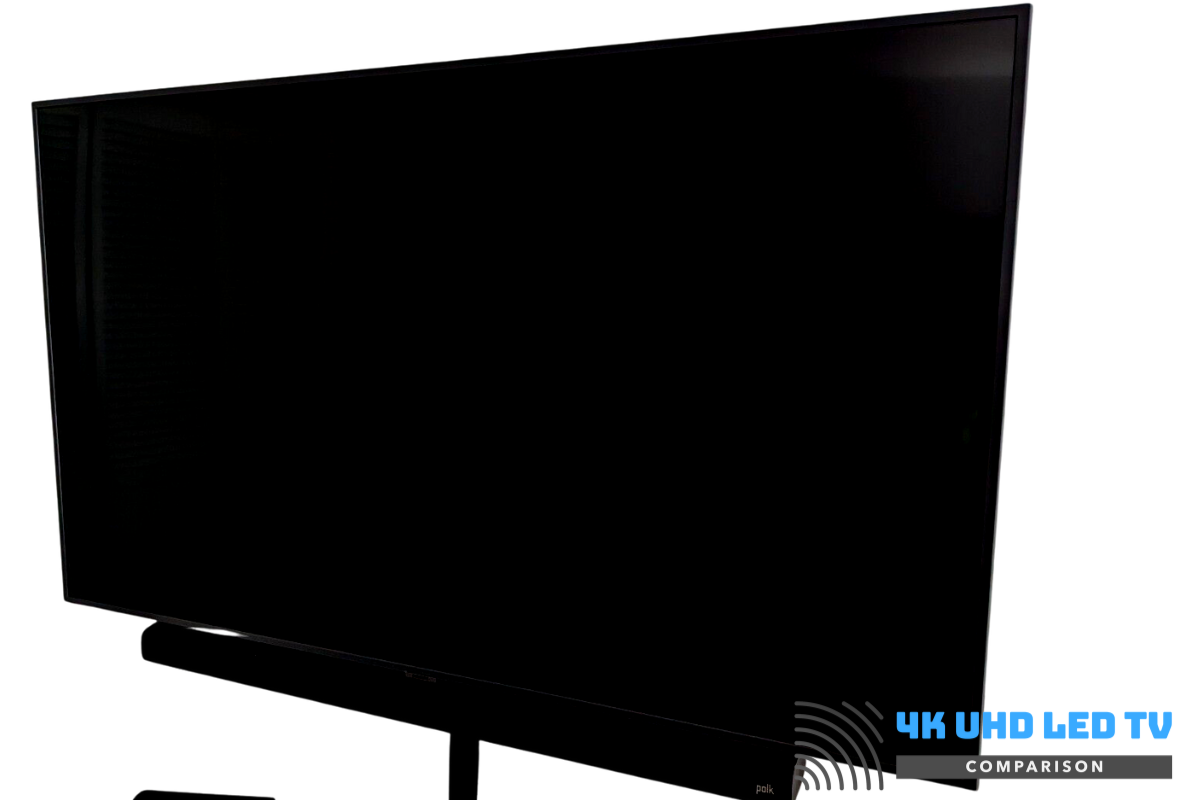

Leave a Reply